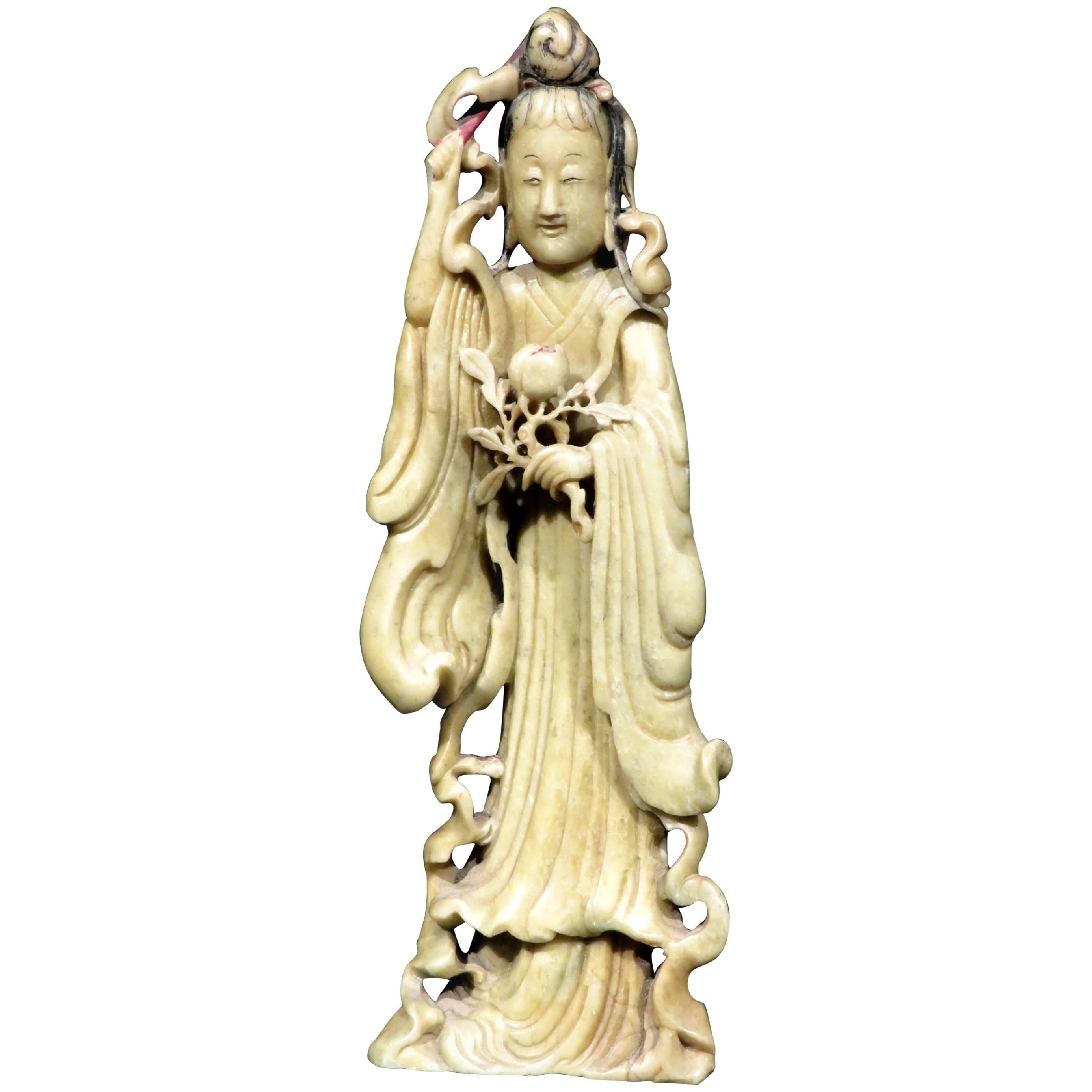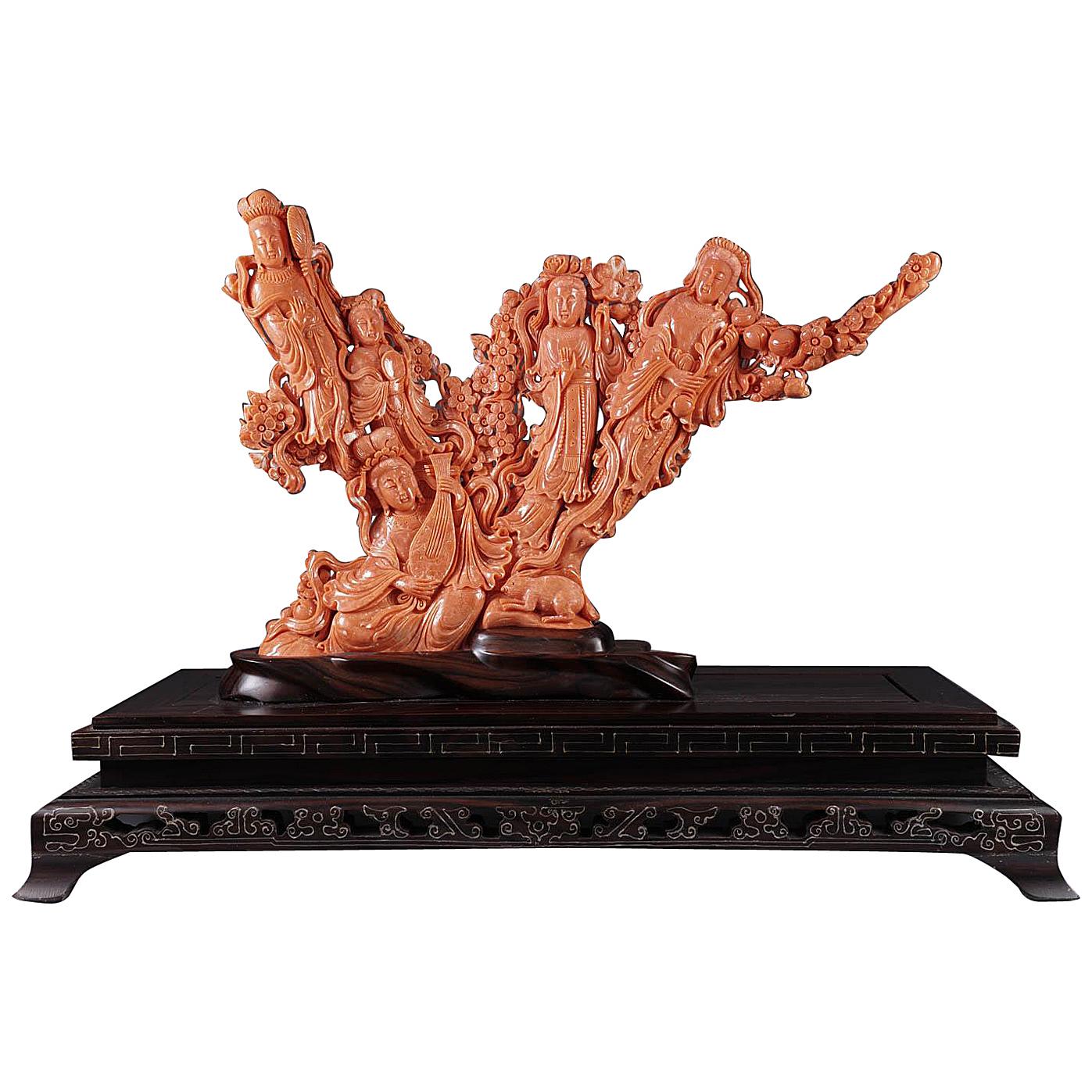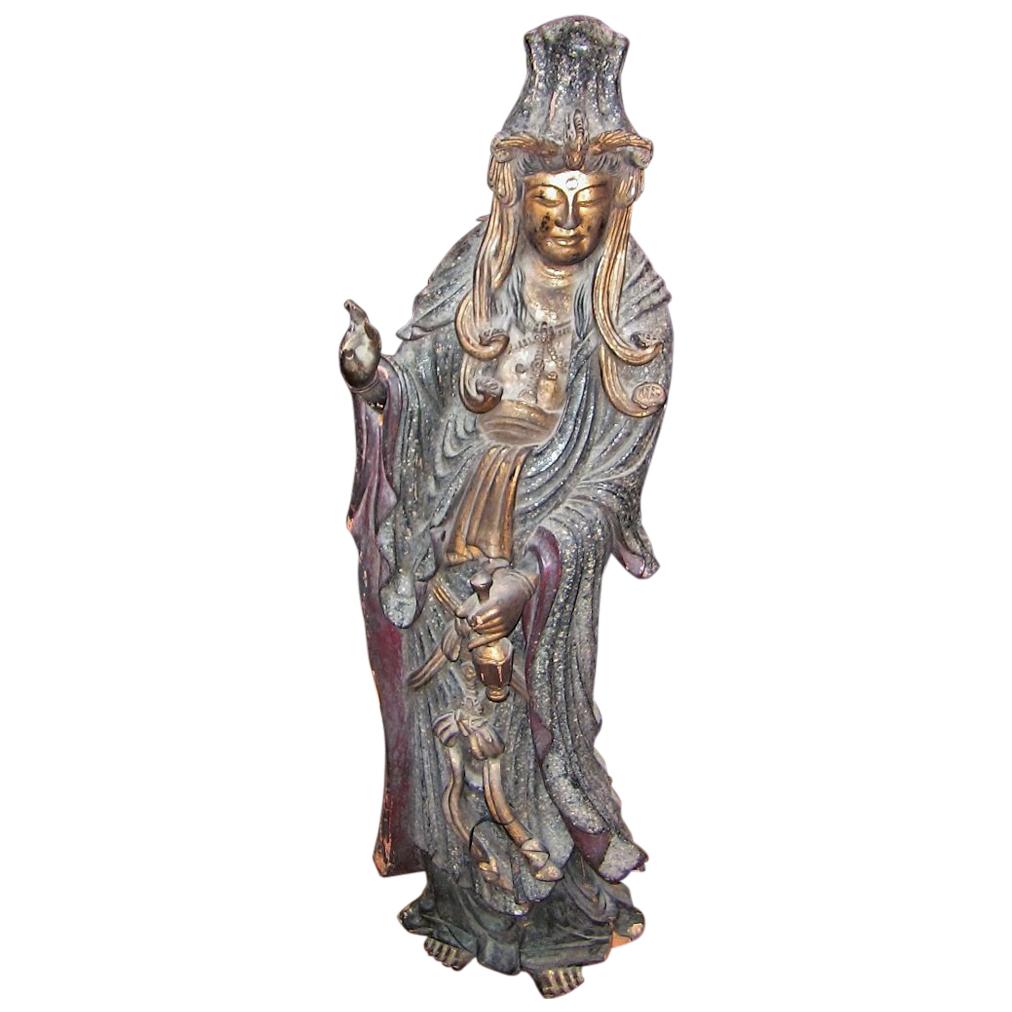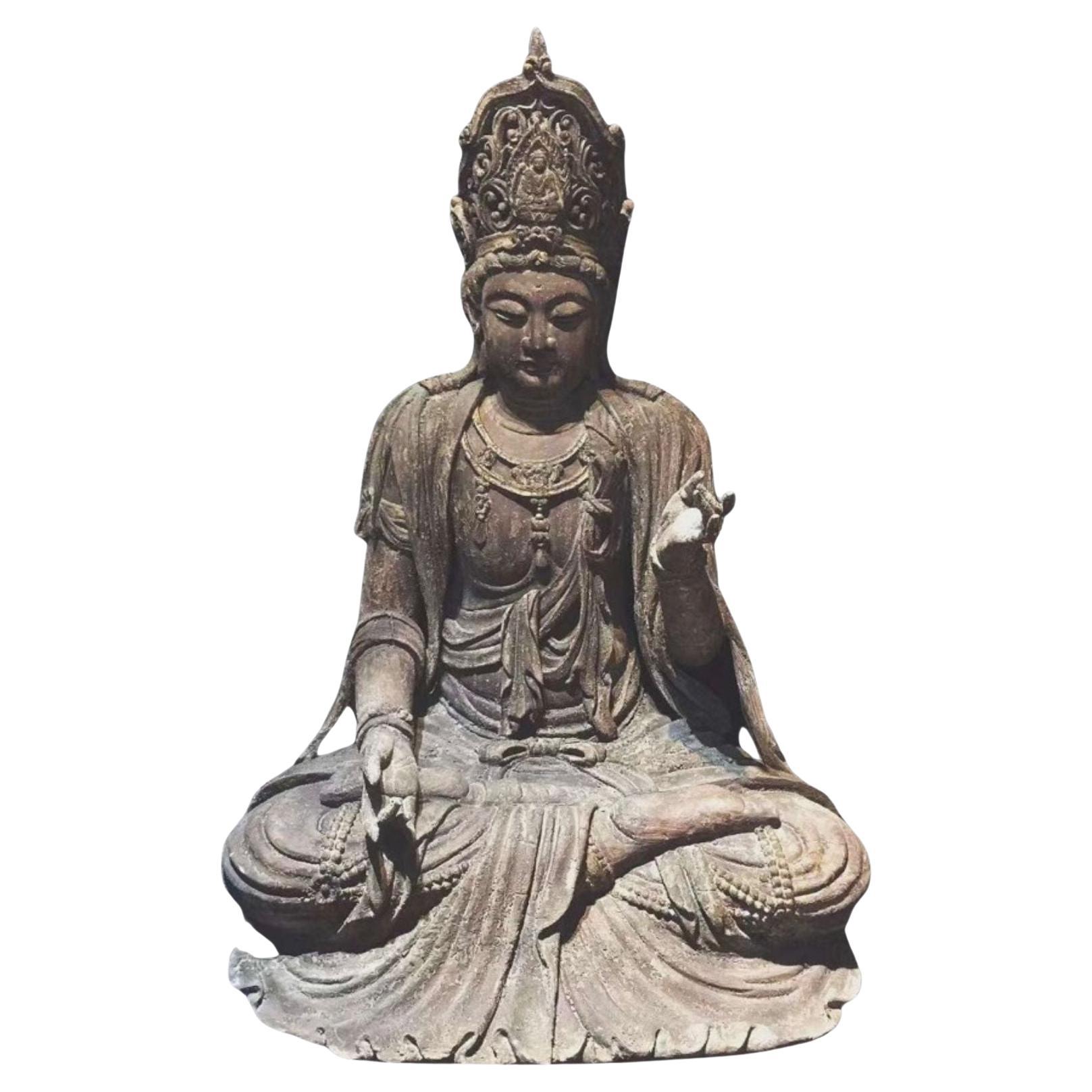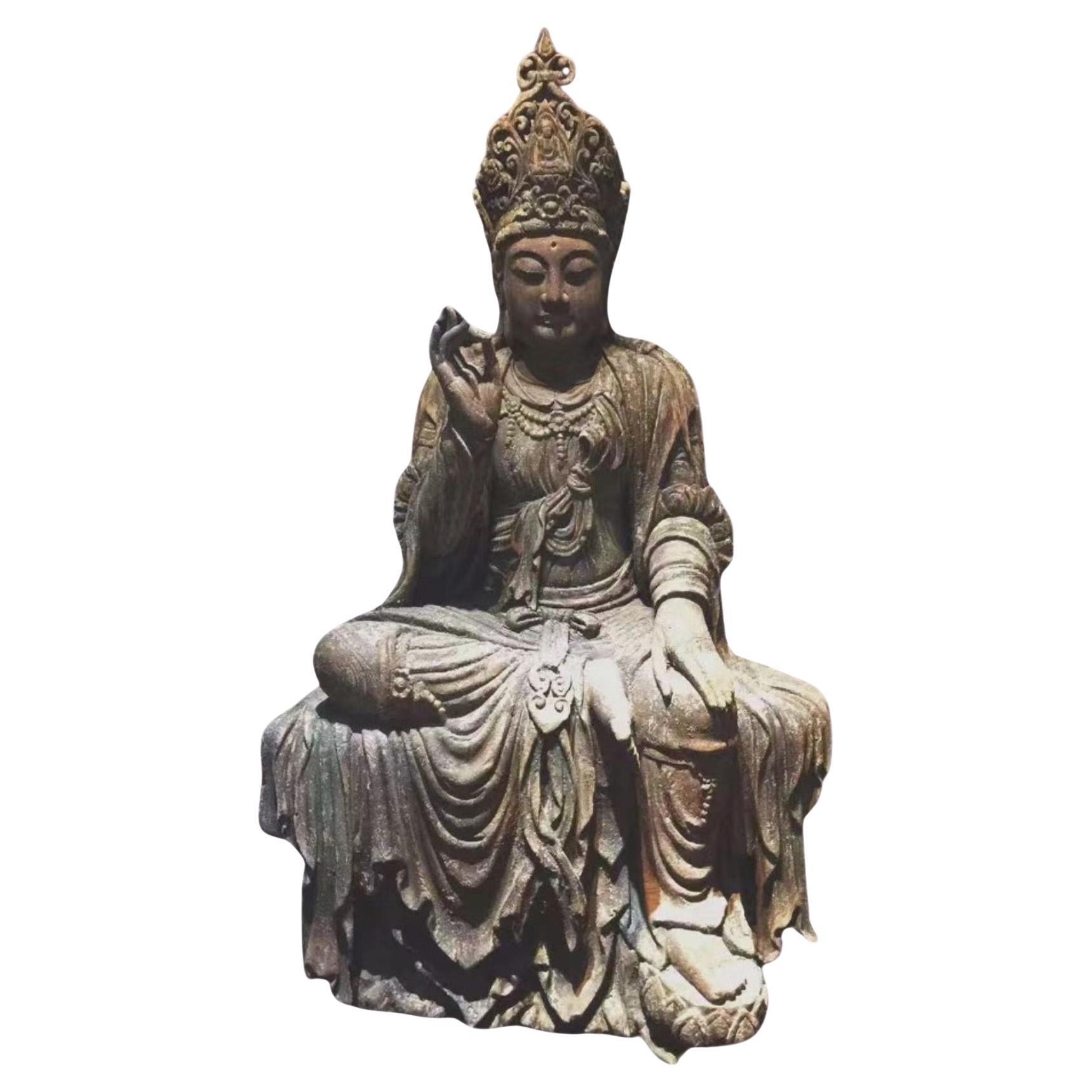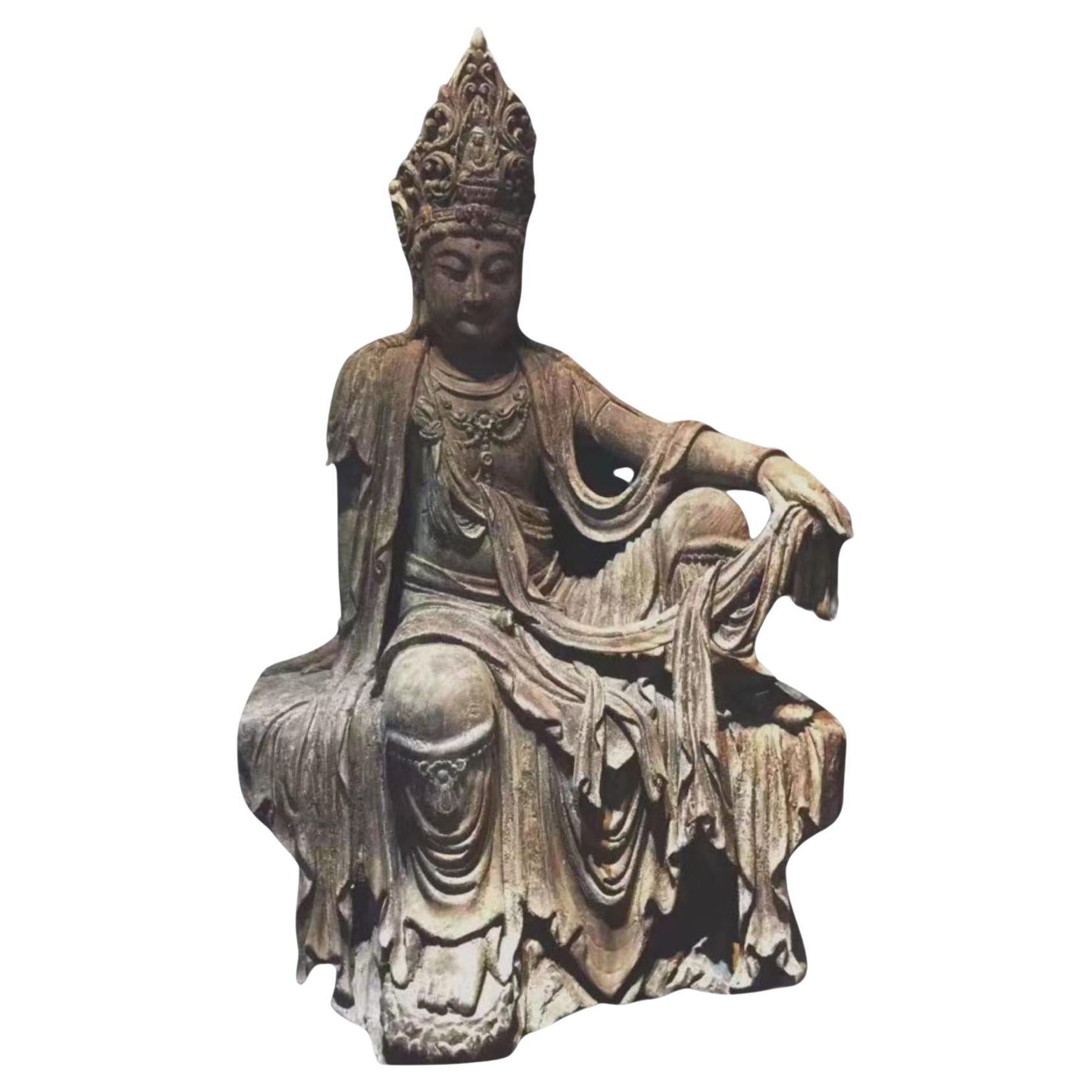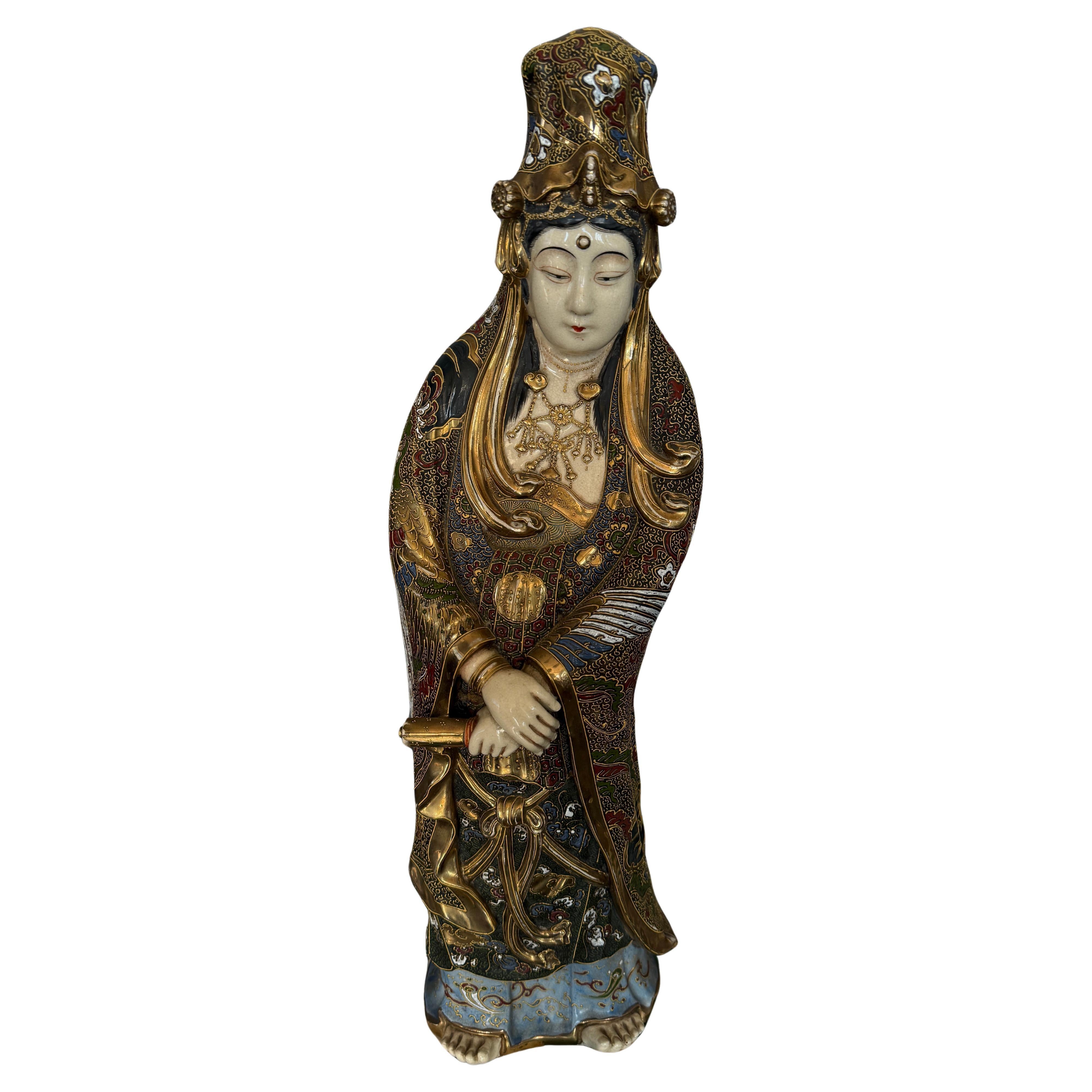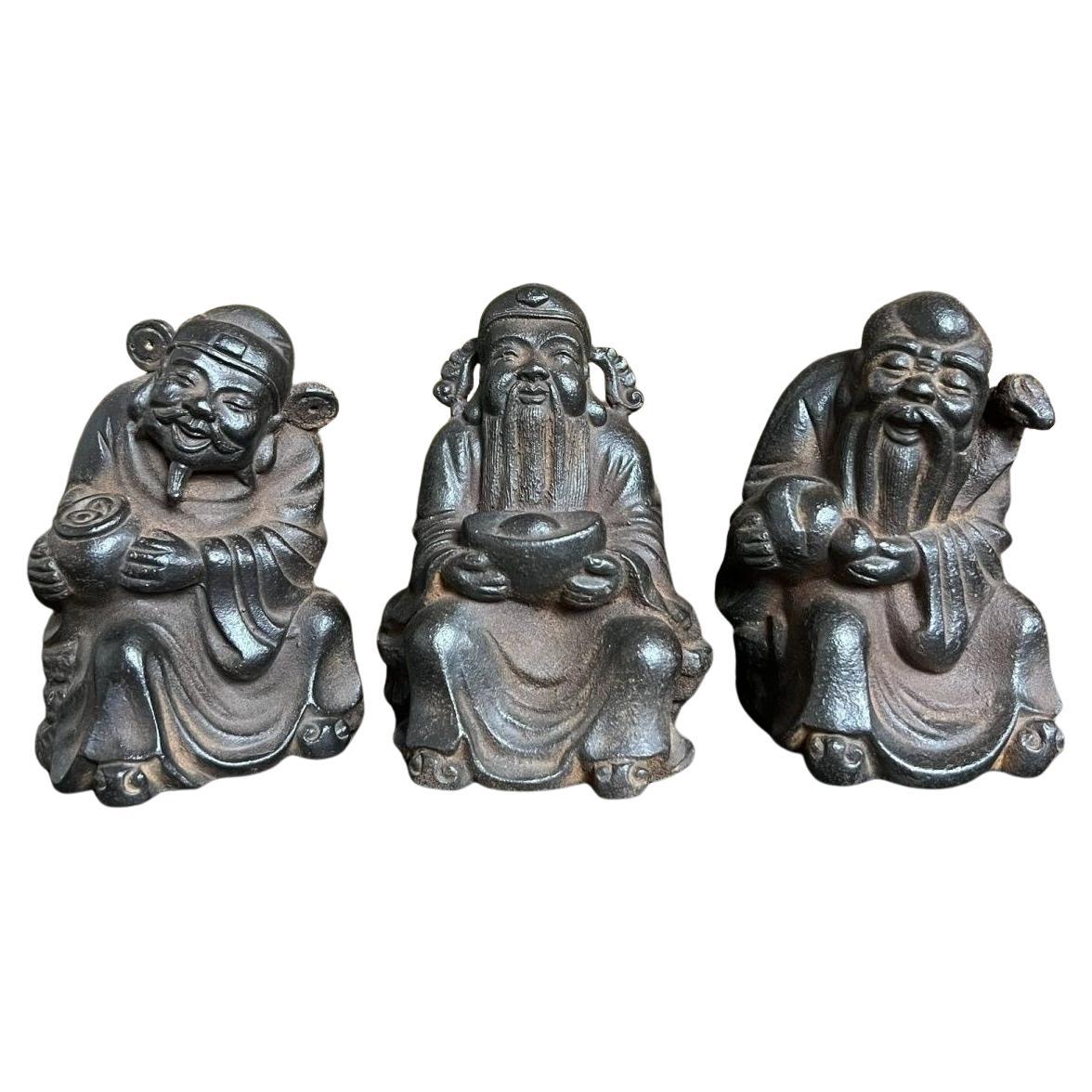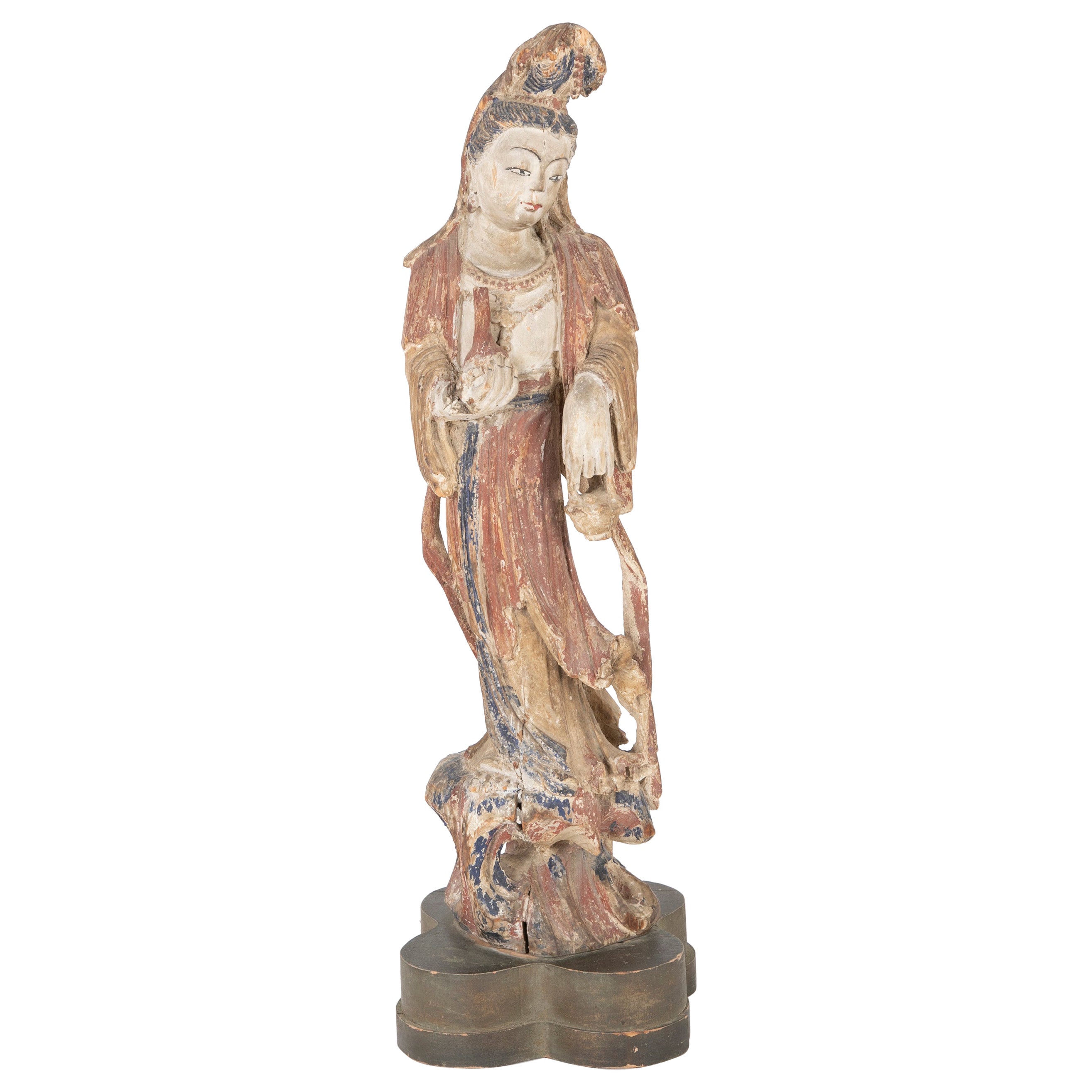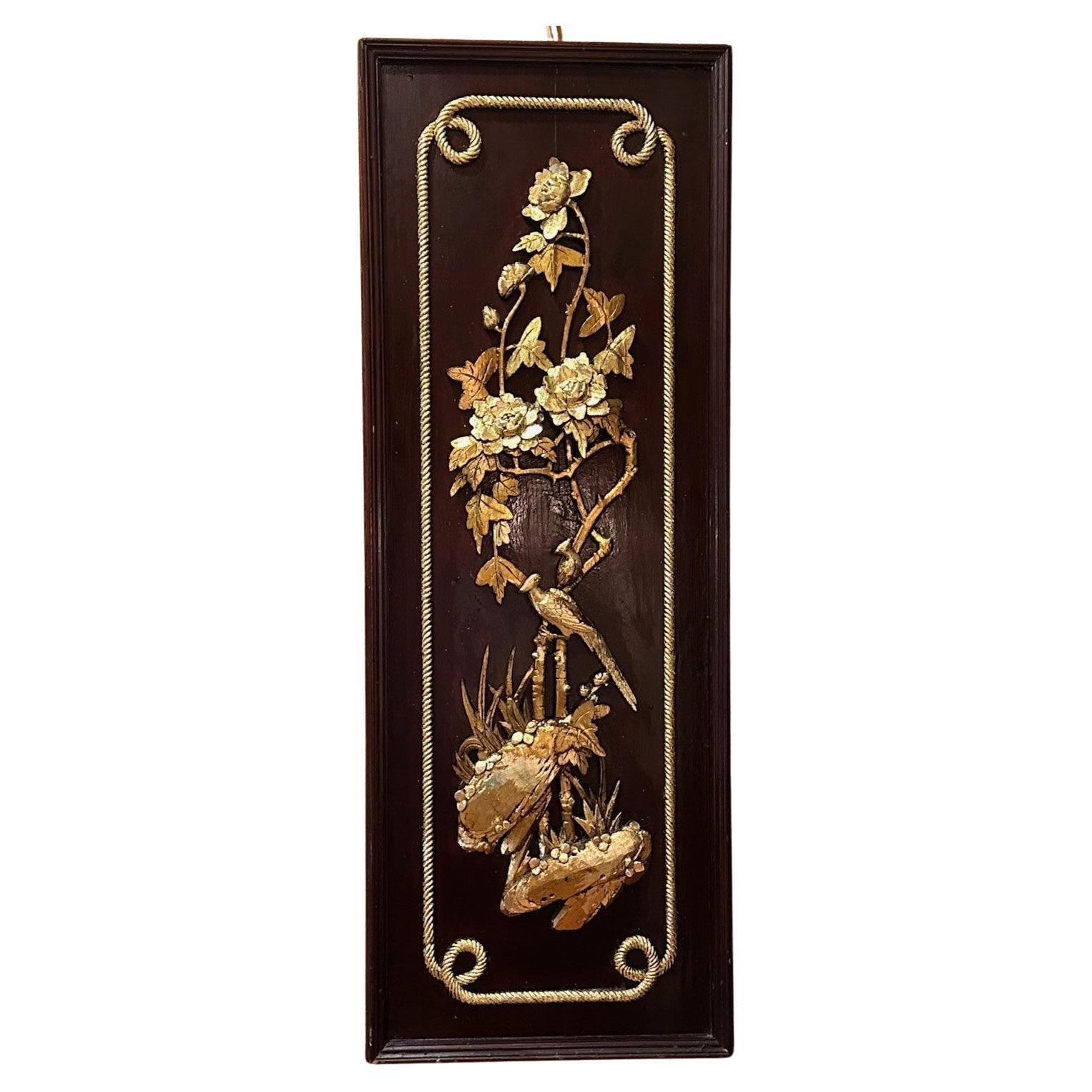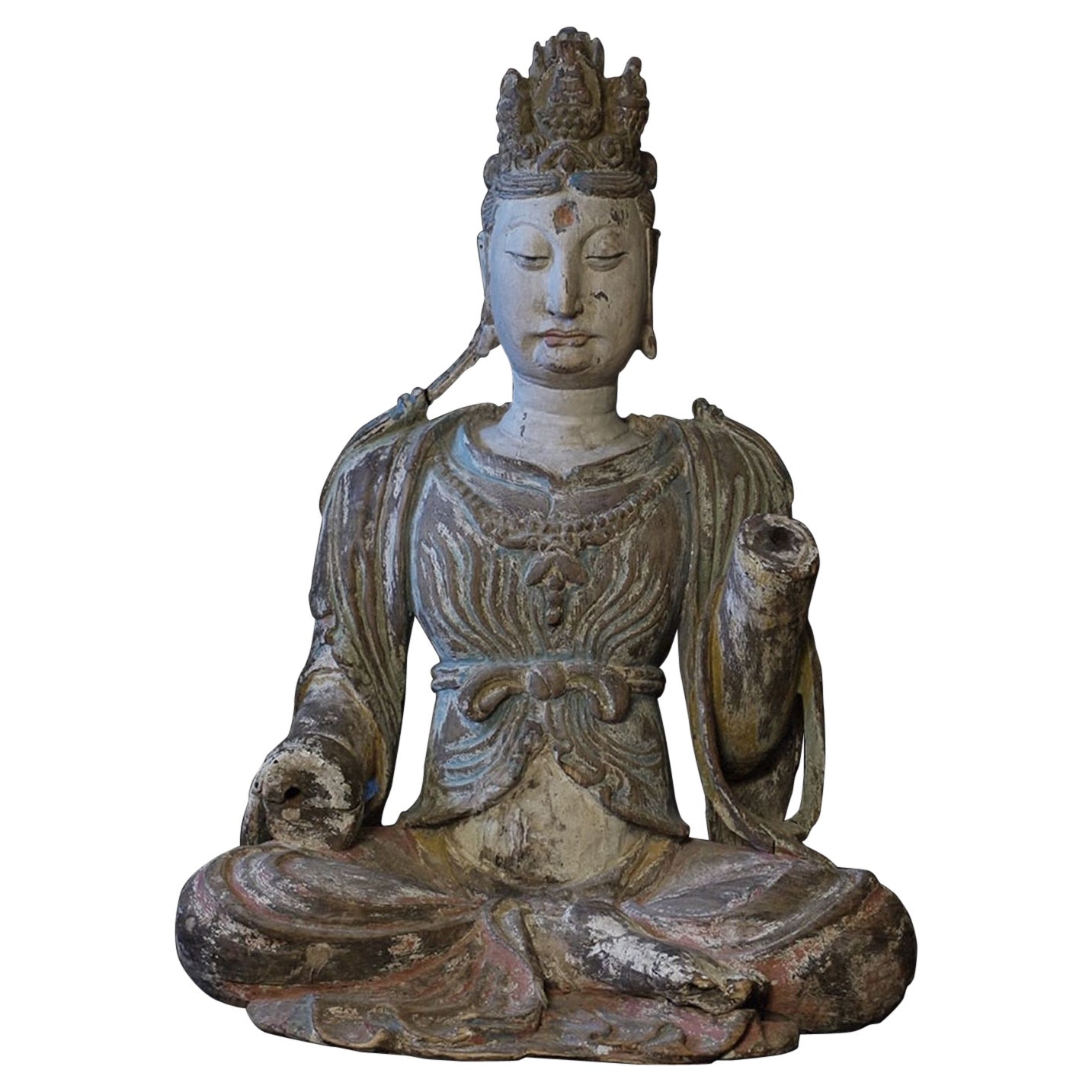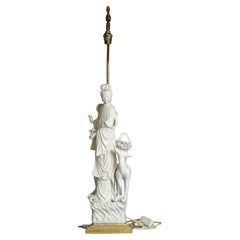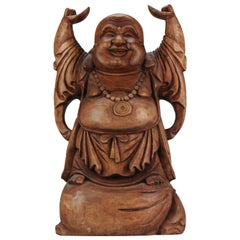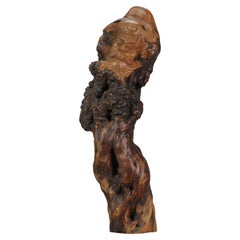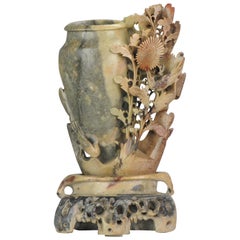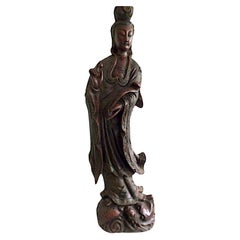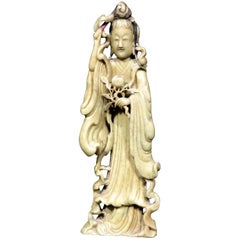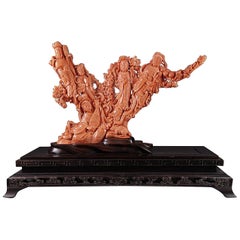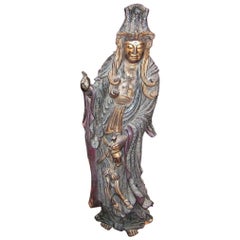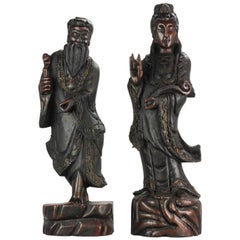
Large Set circa 1900 Chinese Carved Wood Statues Gilded Immortal & Guanyin
View Similar Items
Want more images or videos?
Request additional images or videos from the seller
1 of 21
Large Set circa 1900 Chinese Carved Wood Statues Gilded Immortal & Guanyin
$1,594.59List Price
About the Item
- Dimensions:Height: 24.81 in (63 cm)Diameter: 0.04 in (1 mm)
- Materials and Techniques:
- Place of Origin:
- Period:
- Date of Manufacture:20th Century
- Condition:Wear consistent with age and use.
- Seller Location:Amsterdam, NL
- Reference Number:1stDibs: LU4863216024602
About the Seller
5.0
Platinum Seller
Premium sellers with a 4.7+ rating and 24-hour response times
Established in 2015
1stDibs seller since 2019
264 sales on 1stDibs
Typical response time: 3 hours
Authenticity Guarantee
In the unlikely event there’s an issue with an item’s authenticity, contact us within 1 year for a full refund. DetailsMoney-Back Guarantee
If your item is not as described, is damaged in transit, or does not arrive, contact us within 7 days for a full refund. Details24-Hour Cancellation
You have a 24-hour grace period in which to reconsider your purchase, with no questions asked.Vetted Professional Sellers
Our world-class sellers must adhere to strict standards for service and quality, maintaining the integrity of our listings.Price-Match Guarantee
If you find that a seller listed the same item for a lower price elsewhere, we’ll match it.Trusted Global Delivery
Our best-in-class carrier network provides specialized shipping options worldwide, including custom delivery.More From This Seller
View AllLovely 17/18C Dehua Blanc de Chine Guanyin Statue China Chinese made into a lamp
Located in Amsterdam, Noord Holland
A lovely and large example with nice details. Made into a lamp.
We didn't test if it works.
Condition
with restorations, all pictured. Size: statue 45CM high approx. , total height ...
Category
Antique 17th Century Chinese Qing Sculptures and Carvings
Materials
Porcelain
Huge 20C Chinese Carved Wood Statue of a Laughing Buddha Great Carving
Located in Amsterdam, Noord Holland
Huge and beautifully carved statue of a Laughing Buddha. Nice artifact as home decoration.
Condition
Damage to 1 of the hands, part eye seems restuck (nicely done) and 1 frit/chi...
Category
20th Century Chinese Sculptures and Carvings
Materials
Wood
$1,311 Sale Price
20% Off
Antique Qing ca 1900 Carved Chinese Porcelain Statue Immortal Root Wood
Located in Amsterdam, Noord Holland
Description
China, unusual and finely carved wooden statue. Carved wood root with at the top the a figure of probably an immortal.
Condition
Overall condition Just some age/pr...
Category
Antique 19th Century Chinese Qing Ceramics
Materials
Wood
$754 Sale Price
20% Off
Large Qing Dynasty Chinese Soapstone Statue Nicely Carved Flower Bird Vase
Located in Amsterdam, Noord Holland
Lovely Chinese statue. The artist really did it's best on this one.
The pictures are a bit slanted, the piece itself is straight.
Overall condition, no damages found. Size: 260...
Category
20th Century Chinese Sculptures and Carvings
Materials
Porcelain
$1,107 Sale Price
25% Off
Large ca 1900 Fine Chinese Carved Wood Statue of a Laughing Buddha
Located in Amsterdam, Noord Holland
Description
China, finely carved wooden Laughing Buddha in laying position. Seated on a matching stand.
Condition
Some age signs like cracks and 2 or 3 fritspots. Size: 365 mm d...
Category
Antique 19th Century Chinese Qing Ceramics
Materials
Wood
$1,226 Sale Price
20% Off
Large Pair ca 1900 Finely Chinese Carved Wood Statue of Ox and Boys Chinese
Located in Amsterdam, Noord Holland
China, finely carved wooden statues of boys on oxes. Very nice details. Late Qing or Republic period.
Condition
in general good condition with some usual ware. Cow with a broken ho...
Category
20th Century Chinese Vases
Materials
Porcelain
You May Also Like
1920s Carved Wood Guanyin Statue
Located in Tarrytown, NY
1920s Carved Wood Guanyin Statue
Beautifully fine carving details
Damage shown in pictures
Crack in neck
Category
Vintage 1920s Sculptures and Carvings
Materials
Wood
Carved Yellow Soapstone Figure of Guanyin, Chinese circa 1900
Located in Ottawa, Ontario
The finely carved full length figure of 'The Goddess of Compassion, Kindness & Mercy' shown attired in flowing robes, her hair worn in high chignon with her face effecting a serene a...
Category
Early 20th Century Chinese Qing Sculptures and Carvings
Materials
Soapstone
Exceptional Large Chinese Carved Coral Figural Group Statue of Female Immortals
Located in Queens, NY
An exceptional and large Chinese carved coral figural group / statue of female Immortals.
Very finely carved, very large and heav...
Category
Early 20th Century Chinese Sculptures and Carvings
Materials
Coral
19 Century Asian Wooden Carved, Painted and Gilded Guanyin Statue
Located in Dallas, TX
Presenting a stunning 19 century Asian wooden carved, painted and gilded Guanyin statue.
This wooden statue is hand carved, hand painted and hand-gil...
Category
Antique Late 19th Century Korean Folk Art Sculptures and Carvings
Materials
Wood, Giltwood, Lacquer
A Large Chinese Carved Wood Figure of Guanyin, Late Qing Dynasty
Located in ARMADALE, VIC
Description:
A singular example of Guanyin. Deviating from the Bodhisattva’s conventional pose of ‘royal ease’, the figure is instead seated in the meditative padmasana, or ‘lotus position’, rendering this Guanyin something of a rarity. An Apana more typically associated with depictions of Buddhas, Guanyin assuming this pose immediately signifies this figure as one of particular spiritual reverence. Both feet are revealed crossed upon one another from beneath fabric which spills before her, her left palm turned upward with her hand resting upon her left knee and her right raised in a relaxed gesture. Adorned with a diadem housing a depiction of Amitabha Buddha, her own spiritual guide, she exudes an air of tranquil regality, further characterised by her numerous strings of beads and elaborately fastened dhoti, attire traditionally reserved for Indian princes. Though the figure’s dress is Indian her face is undoubtedly exemplifying artistic Chinese beauty standards. Her face is soft and rounded, full in both the lips and cheeks, with eyes that restfully peer down, as though she is watching over the worries of mankind with compassion.
Notes on the item:
Guanyin is the Chinese interpretation of Avalokiteshvara, the Indian Bodhisattva of compassion. The term “Bodhisattva” is derived from the Sanskrit “Bodhi”, meaning ‘awakening’ or ‘enlightenment’, combined with “Sattva”, meaning ‘spirit’ or ‘being’, referring to one on the path to achieving enlightenment. Bodhisattvas in Mayahana Buddhism are recognised as figures who have effectively achieved enlightenment yet relinquish their accension to nirvana in order to remain amongst mankind in the ultimate act of compassion to aid as spiritual guides. As such, the Bodhisattva inhabit a liminal space between samsara and nirvana; enlightened beings that maintain a relationship with humanity that buddhas cannot, as attaining Buddhahood necessitates the abandonment of all worldly attachments, including mankind. Guanyin’s very name, ‘One who hears the cries of the world’ highlights this role as a compassionate figure who acknowledges the suffering and strife of man. Along with Mahāsthāmaprāpta, a fellow bodhisattva, Guanyin serves as an attendant to Buddha Amitabha, with these three deities recognised as the Three Sages of Western Pure Land Buddhism, a sect of Mayahana Buddhism popular in East Asia.
Avalokiteshvara is commonly posited to have been adopted from Indian Buddhism into China as Guanyin around 200-400 CE, however it was the Tang dynasty (618-907) which saw the popularisation of the deity. By the Ming (1358–1644) and Qing (1644–1911) dynasties, Guanyin held the position as the most popular female deity in China. The unique state of religion in China held no monolithic canon regarding Buddhism and saw the assimilation of several belief systems, primarily Daoism, Buddhism and Confucianism. Consequently, Guanyin became a deity to be revered beyond Buddhism alone, appointed as both an official imperial deity and Daoist deity in the 12th century. Guanyin may also be seen to fulfil the role of idealised femininity as prescribed by Confucianism, with the scarcity of female Chinese deities perhaps accounting for the gradual gender shift Guanyin underwent.
The Indian Avalokiteshvara is unequivocally recognised as male, whilst the supposed gender of Guanyin remains contentious. Although there is a clear shift from the masculine Avalokiteshvara towards a more feminine representation, it is unclear if Guanyin is understood to be entirely feminine, to inhabit qualities of both genders or to be elevated beyond gender entirely, embodying neither. Depictions of Guanyin are highly androgynous, which some believe lends credence towards Guanyin symbolising the unity of dualistic forces as recognised in Daoism, displaying the anthropomorphism of yin and yang.
Comparative Analysis:
Market comparisons of similar Qing Dynasty polychrome figures of Guanyin include lot 767 (no.2) From Christies ‘Important Chinese Ceramics and Works of Art,’ New York, 25 March 2022, with the price realised USD 52,920 (Estimate USD 20,000 – USD 30,000). Christies also auctioned a comparable polychrome Guanyin...
Category
Antique Late 19th Century Chinese Qing Sculptures and Carvings
Materials
Hardwood
A Large Chinese Carved Wood Figure of Guanyin, Late Qing Dynasty
Located in ARMADALE, VIC
An impressive depiction of Guanyin, the Bodhisattva of compassion, whose name bears the meaning ‘One who hears the cries of the world.’ The rather androgynous figure is adorned with beaded jewellery and the princely regalia of a dhoti, draped across her body and spilling out over to partially obscure what she is resting upon. The goddess’ profile exhibits idealised features of Asian artistic convention; her face is soft and rounded, with full lips and relaxed eyes that provide a serene quality of youthfulness to the figure. Adhering to Chinese iconography of Guanyin, the figure is marked by an urna on her forehead, denoting her own enlightenment, as well as a diadem displaying Buddha Amitabha, the spiritual teacher of Guanyin. Seated in the Lalit asana pose, translated as ‘royal ease’, the figure exudes a fine example of the relaxed majesty typical in the characterisation of Guanyin. Whilst the figure’s left hand is placed restfully upon the left leg pendant, the right is raised in the gesture shuni mudra, the second finger held gently against the thumb. Otherwise known as the seal of patience, this gesture indicates the figure as one intended to bestow this virtue, along with compassion and understanding, upon the beholder.
Notes on the item:
Guanyin is the Chinese interpretation of Avalokiteshvara, the Indian Bodhisattva of compassion. The term “Bodhisattva” is derived from the Sanskrit “Bodhi”, meaning ‘awakening’ or ‘enlightenment’, combined with “Sattva”, meaning ‘spirit’ or ‘being’, referring to one on the path to achieving enlightenment. Bodhisattvas in Mayahana Buddhism are recognised as figures who have effectively achieved enlightenment yet relinquish their accension to nirvana in order to remain amongst mankind in the ultimate act of compassion to aid as spiritual guides. As such, the Bodhisattva inhabit a liminal space between samsara and nirvana; enlightened beings that maintain a relationship with humanity that buddhas cannot, as attaining Buddhahood necessitates the abandonment of all worldly attachments, including mankind. Guanyin’s very name, ‘One who hears the cries of the world’ highlights this role as a compassionate figure who acknowledges the suffering and strife of man. Along with Mahāsthāmaprāpta, a fellow bodhisattva, Guanyin serves as an attendant to Buddha Amitabha, with these three deities recognised as the Three Sages of Western Pure Land Buddhism, a sect of Mayahana Buddhism popular in East Asia.
Avalokiteshvara is commonly posited to have been adopted from Indian Buddhism into China as Guanyin around 200-400 CE, however it was the Tang dynasty (618-907) which saw the popularisation of the deity. By the Ming (1358–1644) and Qing (1644–1911) dynasties, Guanyin held the position as the most popular female deity in China. The unique state of religion in China held no monolithic canon regarding Buddhism and saw the assimilation of several belief systems, primarily Daoism, Buddhism and Confucianism. Consequently, Guanyin became a deity to be revered beyond Buddhism alone, appointed as both an official imperial deity and Daoist deity in the 12th century. Guanyin may also be seen to fulfil the role of idealised femininity as prescribed by Confucianism, with the scarcity of female Chinese deities perhaps accounting for the gradual gender shift Guanyin underwent.
The Indian Avalokiteshvara is unequivocally recognised as male, whilst the supposed gender of Guanyin remains contentious. Although there is a clear shift from the masculine Avalokiteshvara towards a more feminine representation, it is unclear if Guanyin is understood to be entirely feminine, to inhabit qualities of both genders or to be elevated beyond gender entirely, embodying neither. Depictions of Guanyin are highly androgynous, which some believe lends credence towards Guanyin symbolising the unity of dualistic forces as recognised in Daoism, displaying the anthropomorphism of yin and yang.
Comparative Analysis:
Market comparisons of similar Qing Dynasty polychrome figures of Guanyin include lot 767 (no.2) From Christies ‘Important Chinese Ceramics and Works of Art,’ New York, 25 March 2022, with the price realised USD 52,920 (Estimate USD 20,000 – USD 30,000). Christies also auctioned a comparable polychrome Guanyin...
Category
Antique Late 19th Century Chinese Qing Sculptures and Carvings
Materials
Hardwood
Recently Viewed
View AllMore Ways To Browse
Porcelain Immortal
Carved Guanyin
Chinese Porcelain Immortal
Tibet Statue
Wood Guanyin
Guanyin Statue
Chinese Wood Guanyin
Guanyin Carved Wood
Chinese Porcelain Guanyin
Japanese Carved
Antique Hand Carved Chinese Furniture
Buddhist Art
Midcentury Japanese Art
Buddha To Buddha
Japanese Stone Art
Edo Period
Stone China
Chinese Stone

